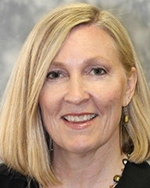Katie Moriarty discusses the change in midwife transportation over the years and how it impacted midwifery in some of the most remote locations in the U.S.
Editor’s Note: The opinions expressed in this blog post are solely those of the author.
Spoiler Alert: This post discusses events in Call the Midwife Season 5 Episode 5
“We are moving from a time of guessing -- from old wives tales and superstition to one of statistics, data. Suddenly everything seemed to have a price, a weight, a value. Life and even death began to be measured in percentages and probability.”
Some things remain the same no matter which era you live in; some women will experience a precipitous birth. Precipitous birth is a fancy term for a birth that is coming fast and furious.
Nurse Busby remained calm as she assisted Roseanne through this emotional scene. She talked her through this tumultuous experience over the telephone as Nurse Phyllis Crane tried to get to her by car and then by bicycle (see below for a link to the American College of Nurse-Midwives in case this ever happened to you, and you need assistance with an emergency childbirth).
I had to smile when they mentioned BBA (born before arrival) and Phyllis chimed in it was BBB (born before bicycle).
This past week I was in Hyden, Kentucky with a cohort of Frontier Nursing University (FNU) student nurse-midwives. This location is where Mary Breckinridge introduced the first nurse-midwives to the United States.
Mary established the Frontier Nursing Service (FNS) in Leslie County, Kentucky in the year 1925. She created outpost clinics and eventually a hospital and British educated nurse-midwives were enlisted to deliver care. These brave pioneers rode horses (and later Jeeps) up the rugged mountainous terrain to attend women and their families.
It did not matter the time of day or the weather conditions -- they brought healthcare to some of the poorest in this nation. They attended births in remote mountain cabins and attended the entire community’s health care needs. Mary Breckinridge demonstrated that when nurse-midwives are utilized they could drastically decrease the infant and maternal mortality. They also had an impact by decreasing the morbidity and mortality for the entire community.
When World War II broke out many of the British nurse-midwives wanted to return home to support their own country’s war effort. It was then that Mary opened a school to train nurse-midwives and the Frontier Graduate School of Midwifery admitted its first class in the year 1939.
Even the mode of transportation changed and in 1940 the nurse-midwives began to use the Jeep to reach the community instead of traveling by horseback. This past Thursday I was able to sit in one of the historic Jeeps when I was at Wendover (Mary Breckinridge’s home).
The school has grown and it has changed its name several times. I am proud to be on faculty at FNU as we continue to carry out the mission of Mary Breckinridge by educating nurse-midwives and nurse practitioners to serve in rural and underserved areas worldwide.
Yes the era may change and the mode of transportation may alter. However, what remains the same is that midwives will be there to help attend women as they give birth, whether it is by foot, horseback, bicycle or motor vehicle. Heck, check out the link below to read about a midwife that recently even arrived by inflatable swan due to a flood.
“Moments and hours, shillings and pounds, calculations and graphs, no matter how complex or how comprehensive – figures tell only a fraction of the stories of our lives. In its simplest form 1+1 has always equaled more than 2! It makes a whole.”
RESOURCES
American College of Nurse-Midwives (n.d.). Emergency preparation of childbirth.
Today (April 15th, 2016). Midwife rides inflatable swan through flood to deliver baby.
 Katie Moriarty, PhD, CNM, CAFCI, FACNM, RN is a professor on faculty at Frontier Nursing University and a Certified Nurse-Midwife with WSUPG CNM Service at Hutzel Women’s Hospital in Detroit, Michigan. Katie serves on the Board of Directors for the American College of Nurse-Midwives as the Region IV Representative. Previously she was the Associate Director of the Nurse-Midwifery Education Program at the University of Michigan.
Katie Moriarty, PhD, CNM, CAFCI, FACNM, RN is a professor on faculty at Frontier Nursing University and a Certified Nurse-Midwife with WSUPG CNM Service at Hutzel Women’s Hospital in Detroit, Michigan. Katie serves on the Board of Directors for the American College of Nurse-Midwives as the Region IV Representative. Previously she was the Associate Director of the Nurse-Midwifery Education Program at the University of Michigan.
Read More About Katie | Read All Posts by Katie